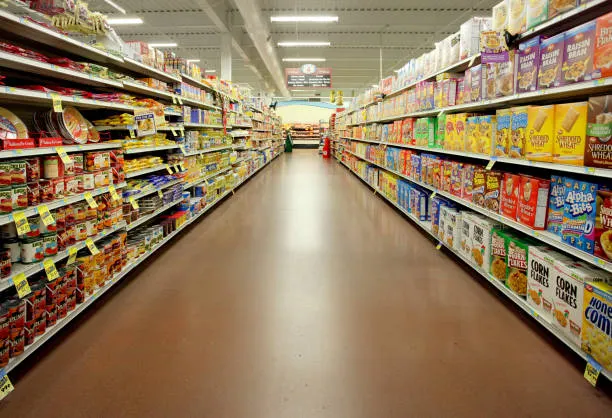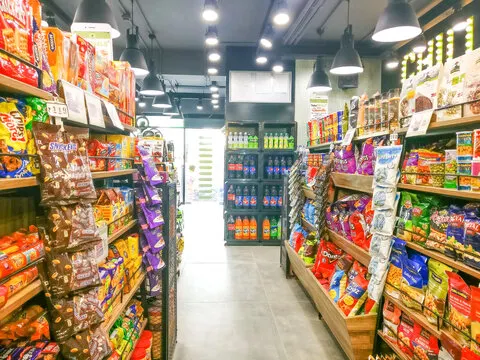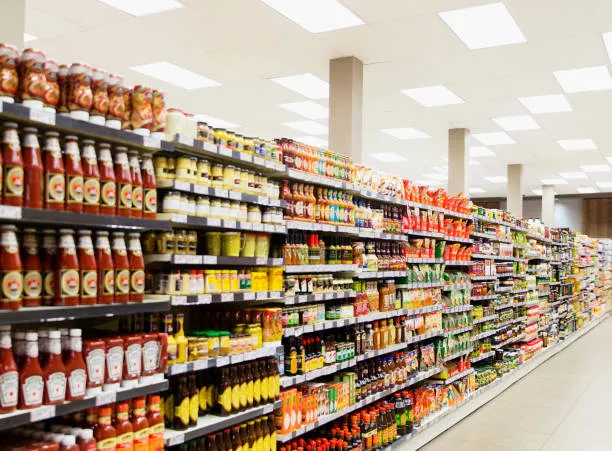The Rising Cost of Groceries
In recent months, grocery prices have surged, leaving consumers struggling to keep up with the rising cost of living. Inflation has been a hot topic globally, and food prices remain one of the biggest contributors. As families and individuals feel the pinch, concerns over economic stability continue to grow.

Why Are Grocery Prices Increasing?
Several factors are contributing to the ongoing surge in grocery costs:
1. Supply Chain Disruptions
- Transportation costs have risen due to increased fuel prices.
- Labor shortages in farming, food processing, and trucking industries have slowed production.
- Global trade disruptions, including import/export restrictions, have affected supply availability.
2. Extreme Weather Conditions
- Climate change has led to droughts, floods, and unpredictable weather, impacting crop yields.
- Natural disasters have destroyed farmland, reducing the supply of essential food items.

3. Increased Demand
- Post-pandemic economic recovery has led to higher consumer spending on groceries.
- Panic buying and stockpiling have further strained supply chains.
4. Rising Costs of Production
- Fertilizers, seeds, and animal feed have become more expensive.
- Energy costs have increased, leading to higher manufacturing and packaging expenses.
Which Grocery Items Are Affected the Most?
While almost all grocery items have seen a price increase, some are more affected than others:
1. Dairy and Eggs
- The price of milk, cheese, and butter has surged due to higher feed costs for dairy cattle.
- Egg prices have been impacted by supply chain issues and avian flu outbreaks.

2. Meat and Poultry
- Beef and chicken prices have risen due to increased feed and transportation costs.
- Processing plant shutdowns have reduced meat production, making it scarcer and more expensive.
3. Fruits and Vegetables
- Seasonal shortages and extreme weather conditions have driven up costs.
- Import restrictions on certain produce have limited availability, increasing prices.
4. Grains and Cereals
- Wheat, rice, and corn prices have surged due to climate issues and higher production costs.
- The global wheat supply has been affected by international conflicts and export bans.
5. Packaged and Processed Foods
- Snacks, canned goods, and frozen foods have become pricier due to higher manufacturing and packaging costs.
How Is This Impacting Consumers?
The continuous rise in grocery prices is affecting households in multiple ways:
1. Higher Monthly Grocery Bills
- Families are forced to spend a larger portion of their income on essential food items.
- Many are switching to cheaper alternatives and store-brand products.
2. Budget Adjustments
- Consumers are cutting back on non-essential expenses to afford groceries.
- Eating out and ordering takeout have decreased as home-cooked meals become the priority.
3. Food Insecurity Concerns
- Lower-income households are struggling to access nutritious food.
- Food banks and charitable organizations are seeing increased demand for assistance.

What Are Experts Saying?
Economic analysts and industry experts have weighed in on the situation:
- Economists Predict Prolonged Inflation: Experts warn that grocery prices may remain high throughout 2025 before stabilizing.
- Government Policies in Action: Authorities are considering measures such as subsidies, import relaxations, and fuel cost reductions to ease inflation.
- Retailers Respond: Supermarkets are implementing discount programs and loyalty rewards to help consumers save money.
How Can Consumers Cope with Rising Grocery Prices?
Despite the ongoing price increases, there are strategies to manage grocery expenses effectively:
1. Smart Shopping Strategies
- Compare prices across different stores before making purchases.
- Buy in bulk to take advantage of discounts and reduce frequent shopping trips.
2. Meal Planning and Budgeting
- Plan meals based on affordable, seasonal, and readily available ingredients.
- Stick to a weekly or monthly grocery budget to control spending.
3. Utilizing Discounts and Coupons
- Take advantage of store promotions, loyalty programs, and cashback offers.
- Look for digital coupons and mobile apps that provide grocery discounts.
4. Reducing Food Waste
- Store perishable items properly to extend shelf life.
- Repurpose leftovers to minimize waste and maximize grocery purchases.
What’s Next? The Future of Grocery Prices
While there is no immediate solution to rising grocery prices, certain trends may influence future costs:
- Technological advancements in agriculture may improve food production efficiency.
- Government interventions could help stabilize inflation and reduce supply chain bottlenecks.
- Consumer spending patterns will continue to shape the demand-supply balance, affecting pricing trends.
Conclusion
The rise in grocery prices is a growing concern for millions of consumers worldwide. Understanding the reasons behind inflation, its impact, and how to manage grocery spending can help individuals and families navigate these challenging times. As economic conditions evolve, staying informed and adopting cost-saving strategies will be key to coping with ongoing price hikes.
U.S. Space Force Unveils Bold Plan to Establish First Lunar Military Base by 2035






